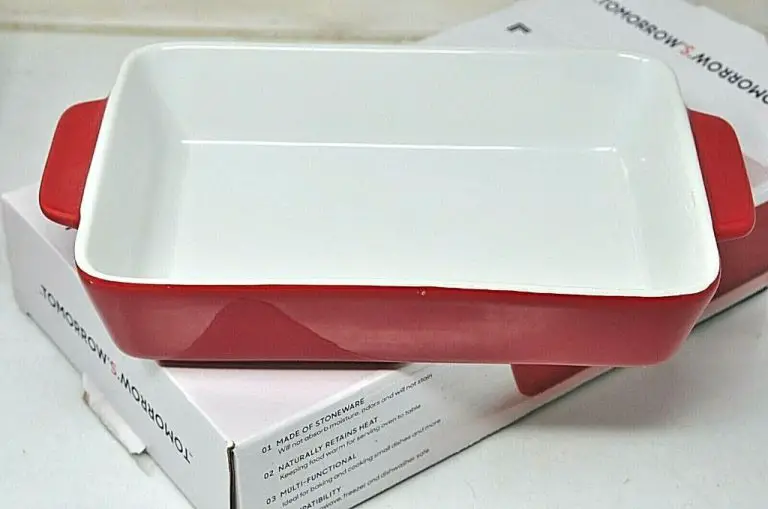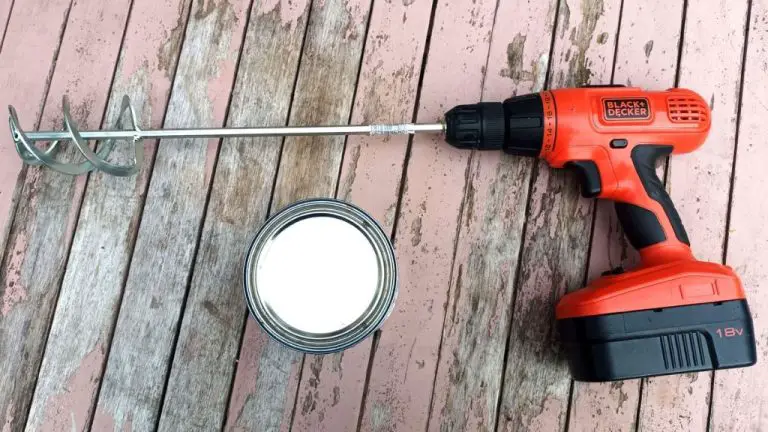How Do You Remove Sticky Clay?
What is Sticky Clay?
Sticky clay, also known as bentonite, montmorillonite, or gumbo, is a type of expansive clay soil that swells up and becomes sticky when wet. It is composed primarily of the clay mineral montmorillonite and gets its unique properties from its molecular structure.
Montmorillonite has a sheet-like structure with thin layers that can absorb large amounts of water between them. When water is absorbed, the clay swells up and the sheets slide over each other, creating a slippery gel-like texture.
Sticky clay deposits are commonly found in arid regions that were once shallow seas, as montmorillonite forms from the weathering of volcanic ash in marine environments. When dry, the clay becomes dense and tightly bound. But introduce moisture, and sticky clay will quickly absorb it and become soft, muddy, and adhesive.
This rapid expansion and gummy texture when wet is what makes sticky clay notoriously difficult to work with. The swelling causes issues with foundations, road beds, sewer lines, and any construction projects. It also readily sticks to tires, tools, equipment, shoes, clothes and skin when wet.
Where Does Sticky Clay Come From?
Sticky clay soils are generally found in certain geological formations and locations. The stickiness comes from the clay minerals present, which have tiny plate-like structures that cling together when wet. Here are some of the most common places to encounter sticky clay soil:
Coastal Plains – Sticky clay soils are prevalent along the coastal plains near the Gulf of Mexico and Atlantic Ocean. The sediments deposited in these areas over time contain high amounts of smectite clays that become very sticky when wet.
Piedmont Region – The Piedmont region of the eastern US contains saprolite clay derived from the weathering of metamorphic and igneous rocks. These red and yellow clays turn sticky when saturated.
Glacial Deposits – Glaciers grinding up bedrock lead to fine rock particles depositing as clay soils. These clays in the northern US and Canada can create very sticky mud.
Floodplains – Flooding rivers deposit fine silts and clays, which bind together. Floodplain clay soils are common causes of stickiness.
Vertisols – These dense, sticky, clay-rich soils are found worldwide, including India, Australia, and parts of North and South America. They are prone to shifting and churning when wet due to expanding clay minerals.
Mudstone – Mudstone is a very fine-grained sedimentary rock that weathers into sticky clay soils. Areas with mudstone bedrock tend to have abundant sticky clay.
Problems Caused by Sticky Clay
Sticky clay can cause a number of frustrating issues due to its tendency to cling to surfaces, stain materials, and make working with soil difficult. Here are some of the main problems caused by sticky clay:
Difficult to Work With
One of the biggest issues with sticky clay soil is that it becomes dense and compacted when dry. This makes it extremely hard to dig or cultivate. The soil becomes rock solid and shoveling through it can be a huge chore. Sticky clay resists cutting and clumping when dry.
Staining
The iron oxide content in sticky clay gives it a reddish or yellowish hue. This pigment can easily rub off on clothes, shoes, equipment, and other surfaces, leaving stubborn stains. Clay stains on fabric may never completely come out in the wash.
Clings to Surfaces and Shoes
When wet, sticky clay transforms into a thick, sticky mud that latches onto any surface it touches. It sticks tightly to garden tools, boots, pets paws, tires and tracks of machinery. This can make working with the soil a very messy process.
Removing Sticky Clay From Skin and Clothes
Sticky clay can be a nuisance when it gets on your skin, hair, or clothes. Thankfully, there are some easy methods to remove sticky clay from yourself and your garments.
Washing
For skin, start by letting the clay dry, then gently brushing off any excess. Wash with soap and warm water, scrubbing to remove remaining clay residue. Rinse thoroughly. For clothes, promptly rinse the garment under running water to remove excess clay. Machine wash using a normal cycle with detergent. For extra sticky clay, pretreat with stain remover or wash separately by hand using hot water and detergent. Rinse thoroughly until water runs clear.
Scraping
For dried clay on skin, use a blunt tool like a spoon or coin’s edge to gently scrape off the clay, taking care not to scratch skin. For garments, allow clay to fully dry then carefully scrape off excess with a dull knife, credit card, or other flat edge. Go slowly to avoid damaging fabric. Remaining clay can then be washed out.
Clay Remover Products
Specialized clay remover sprays or wipes can help dissolve and lift away stubborn clay residue. Clay remover products work similarly to hand sanitizers, using alcohol or other solvents to break down clay particles so they can be wiped off. Check product instructions and test on a small area first to ensure it’s safe for your skin or garment fabric.
Removing Sticky Clay From Surfaces
Sticky clay can be a nuisance when it adheres to outdoor surfaces like patios, walkways, driveways, siding, and decks. With some elbow grease and the right cleaning solutions, you can remove sticky clay buildup and restore your surfaces.
Scrubbing with a stiff bristle brush and water is a good starting point for removing sticky clay from surfaces. Apply enough water to thoroughly soak the area and loosen the clay. Scrub vigorously with a scrub brush to dislodge the clay. A pressure washer can also be very effective at blasting away sticky clay from surfaces.
For more stubborn sticky clay that resists scrubbing, try using solvents or cleaners specifically designed to cut through grease, oil and heavy soils. Citrus-based cleaners work well to help break down the sticky residues. An all-purpose cleaner or degreaser can also help dissolve sticky clay. Check the product label to ensure it’s safe for your type of surface.
It’s best to work in small sections when cleaning surfaces of sticky clay. Allow the cleaning solutions time to soak into the clay before scrubbing. Reapply cleaners and scrub again if needed. Thoroughly rinse the area with clean water after scrubbing to wash away all the dissolved clay and cleaning residue.
Avoid using harsh chemicals like bleach, ammonia or acids to remove sticky clay from outdoor surfaces, as these can damage materials. With some patience and the proper cleaning solutions, you can successfully rid surfaces of pesky sticky clay buildup.
Removing Sticky Clay From Gardens and Lawns
Sticky clay soil can cause major headaches for gardeners and homeowners trying to maintain a lush lawn. When clay is compacted, it doesn’t allow air and water to penetrate well, leading to poor drainage and stunted plant growth. Removing built-up clay from gardens and lawns takes some effort, but is doable with the right techniques.
One of the best ways to remove sticky clay from the soil surface is by raking. Use a stiff metal rake to break up the top layer of compacted clay. Rake parallel to any slopes to prevent erosion. Fluffing up the soil helps loosen the clay so water can infiltrate better. Raking also prepares the ground for aerating.
Soil aeration is key for managing sticky clay. An aerator pulls plugs out of the soil, leaving behind holes for air, water and nutrients to reach plant roots. Core aerators remove 3-4 inch deep plugs, while spike aerators poke smaller holes. Aerate gardens in early spring or fall when the soil is moist. Go over the area multiple times in different directions.
Amending clay soil with organic materials like compost or manure improves texture and drainage over time. Spread 1-3 inches over the garden and rake or till it into the top 6 inches of soil. Adding gypsum or calcium also helps break up sticky clay particles. Reapply amendments annually to boost soil health.
With raking, aerating and amendments, you can transform dense clay soil into a loamy, plant-friendly garden or lawn. Be patient, as improving clay takes some years. But the effort pays off through better growth and less frustrations with mud.
Heavy Equipment for Removing Sticky Clay
For large areas or deep deposits of sticky clay soil, heavy equipment may be required to excavate and remove it efficiently. Some common heavy machines used include:
Backhoes
Backhoes, sometimes called rear actors, have a shovel bucket on the back paired with a boom arm that allows the operator to dig and scoop. The shovel can dig down to around 20 feet, making backhoes ideal for removing thick, compacted clay layers. They can trench, dig holes, scrape surfaces, load material into trucks, and smooth and level the ground.
Bulldozers
Bulldozers utilize a front-mounted wide metal plate or blade that can be lowered to drag along the surface, pushing clay soil away. The heavy tracked construction of bulldozers allows them to operate on challenging terrain. They excel at moving large quantities of dense, cohesive clay soil.
Excavators
Excavators are versatile machines that use a boom arm with an attachment for digging, grasping, and moving sticky clay deposits. Typical attachments include buckets, breakers, grapples, augers, and clamshells. Excavators can dig precise trenches and holes and remove clay from spaces too small for other equipment.
These heavy machines allow contractors to rapidly remove vast amounts of clay and reshape the landscape. Their power is necessary for large jobs or where clay is very thick, packed down, or combined with rocks. Safety precautions should be taken, and specialized training and skills are required to operate them effectively.
Preventing Sticky Clay Buildup
Clay soil can be notoriously difficult to work with because of its tendency to become sticky and cling to surfaces, shoes, tools, and more. Preventing a sticky clay buildup in the first place can help save lots of headaches down the road. Here are some useful tips for stopping sticky clay before it becomes a problem:
Use Sealants
Applying sealants to surfaces exposed to clay soil can help prevent buildup. Concrete sealers, tile sealers, stone sealants, and even water repellent wood sealants can make these surfaces slick so clay has a harder time sticking. Reapply sealants periodically per the manufacturer’s recommendations.
Add Gravel
Mixing gravel into clay soil creates air pockets that keep the soil loosened up and better drained. This prevents it from becoming dense and sticky when wet. Adding a 2-4 inch gravel sub-base beneath walkways, patios, and driveways also helps prevent clay from pushing up and clinging to the surface.
Smart Landscaping
Choosing the right plants and materials for clay soil can prevent sticky buildup. Avoid materials like wood chips or organic mulch that can break down and mix into the clay. Instead use washed gravel, crushed stone, or pea gravel as mulch. Drought resistant plants with deep root systems help aerate and drain clay soil. A French drain system also improves drainage.
Taking some preventative measures can help manage sticky clay soil and prevent major buildup issues. Talk to a landscaping expert for more tips tailored to your specific property.
Working With Sticky Clay Soil
Sticky clay soil can make gardening and landscaping difficult, but with some adjustments, you can improve drainage and make the soil easier to work with.
Proper Drainage
One of the biggest challenges with clay soil is poor drainage. Water gets trapped, leading to the sticky mud that clay is known for. Installing drainage tile, gravel trenches, or french drains can help carry away excess water.
You can also create drainage channels on the surface to direct water away from garden beds and lawns. Slope the ground slightly to help with runoff.
Soil Amendments
Adding organic materials like compost or manure introduces beneficial microorganisms to the soil while also improving texture. These amendments loosen sticky clay and help retain moisture and nutrients.
Tilling in coarse materials such as sand, pea gravel, or small wood chips creates air pockets in the dense clay. However, too much sand can negatively impact drainage.
Raised Beds
For small areas like vegetable gardens, building raised beds with imported topsoil gives you more control over the soil quality. Mix in compost to lighten the soil and boost nutrients for your plants.
The added elevation also aids drainage for the roots. Line the bottom with hardware cloth to block burrowing pests.
When to Call a Professional
While sticky clay soil can often be managed through DIY methods, larger jobs or environmental regulations may require hiring a professional contractor. Here are some instances when professional help is recommended:
Large Jobs
Removing large quantities of sticky clay or reshaping substantial areas of land requires heavy equipment and extensive labor. Attempting major sticky clay removal without proper tools can be inefficient, strenuous, and even dangerous. Professionals have access to equipment like backhoes, excavators, and dump trucks to dig out and haul away massive amounts of clay quickly and safely.
Environmental Regulations
How you dispose of sticky clay may be subject to local environmental regulations. There are often laws regarding transporting and dumping certain amounts of soil, clay or other natural materials. Professionals are familiar with these regulations and have access to approved disposal sites. Attempting DIY sticky clay removal on a large scale without following proper protocols could result in hefty fines.
Proper Disposal
Related to environmental regulations, proper disposal of large volumes of clay is crucial. Professional contractors have the knowledge and means to ensure removed sticky clay is disposed of or recycled responsibly. Dumping clay in unauthorized areas or failing to contain clay during transport can lead to contamination and damage ecosystems.
For major sticky clay removal projects, or if you are unsure about local regulations, call in the experts. Professionals have the equipment, manpower, and expertise to handle the job efficiently and legally.




